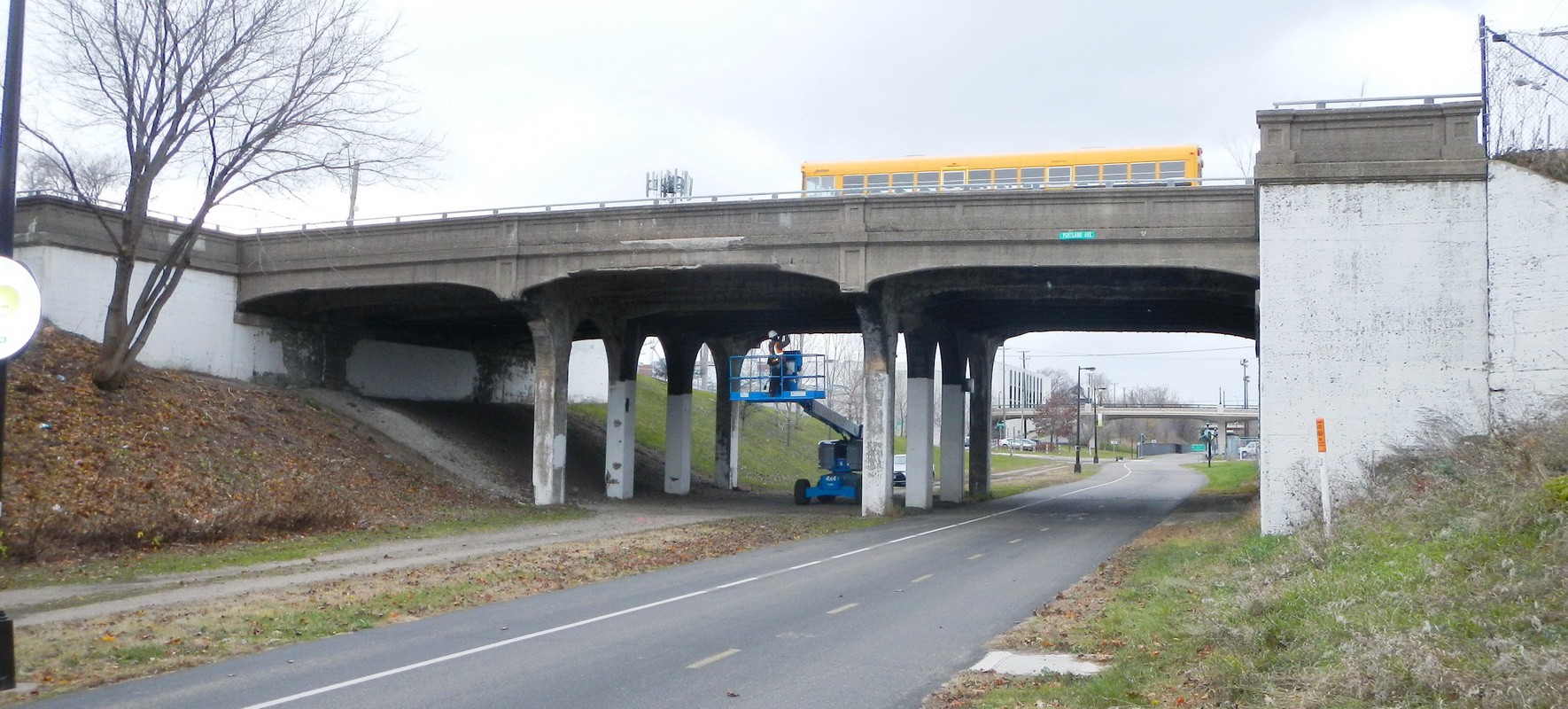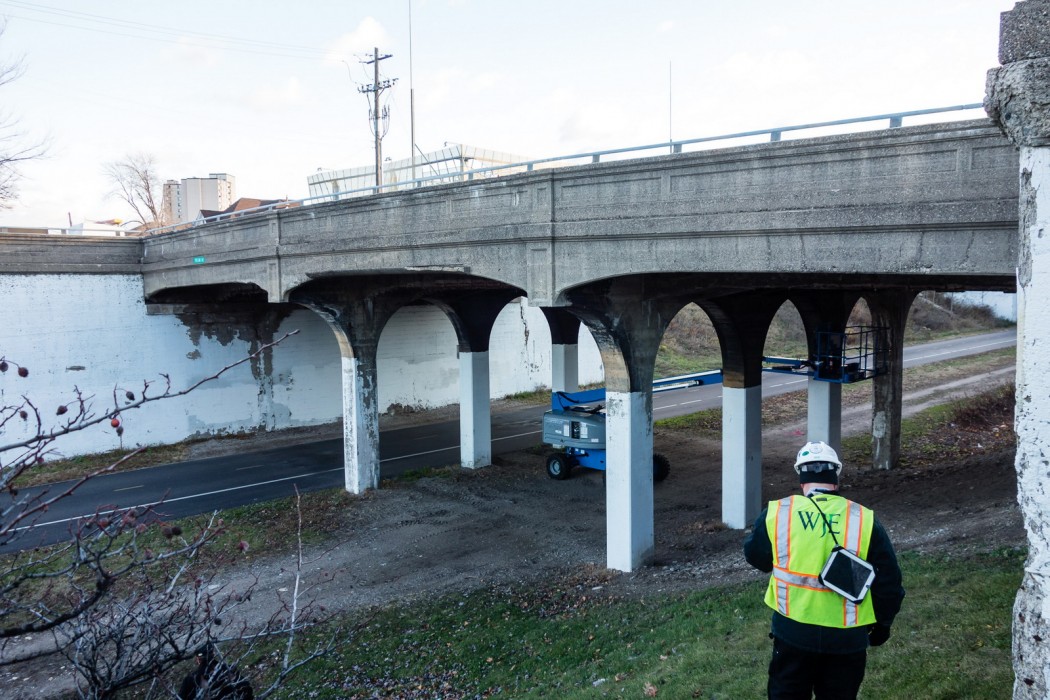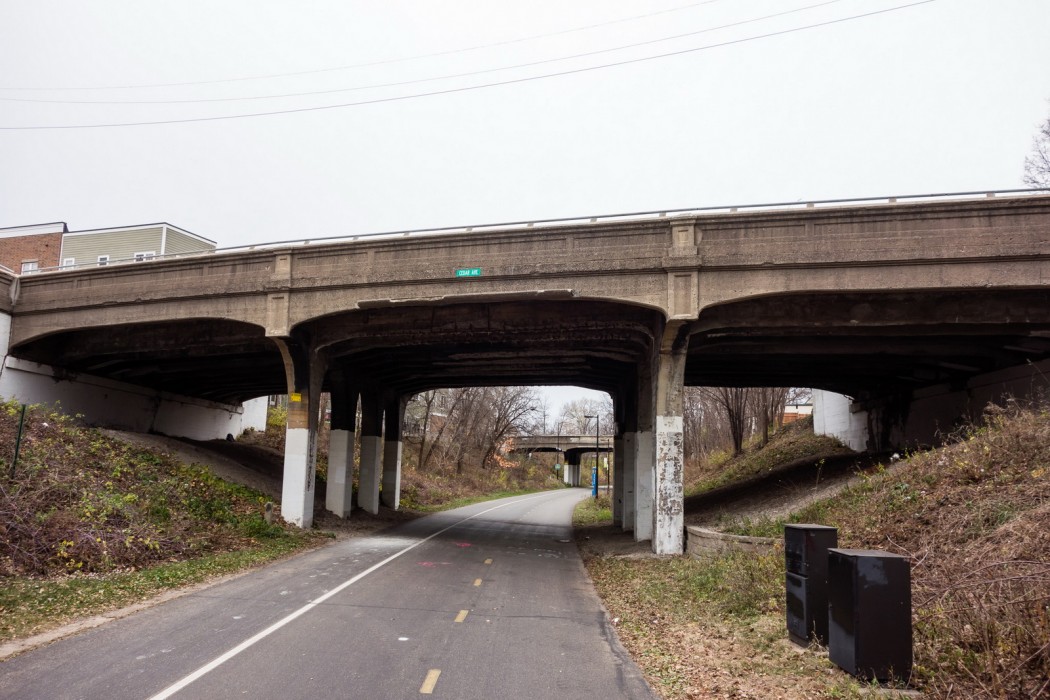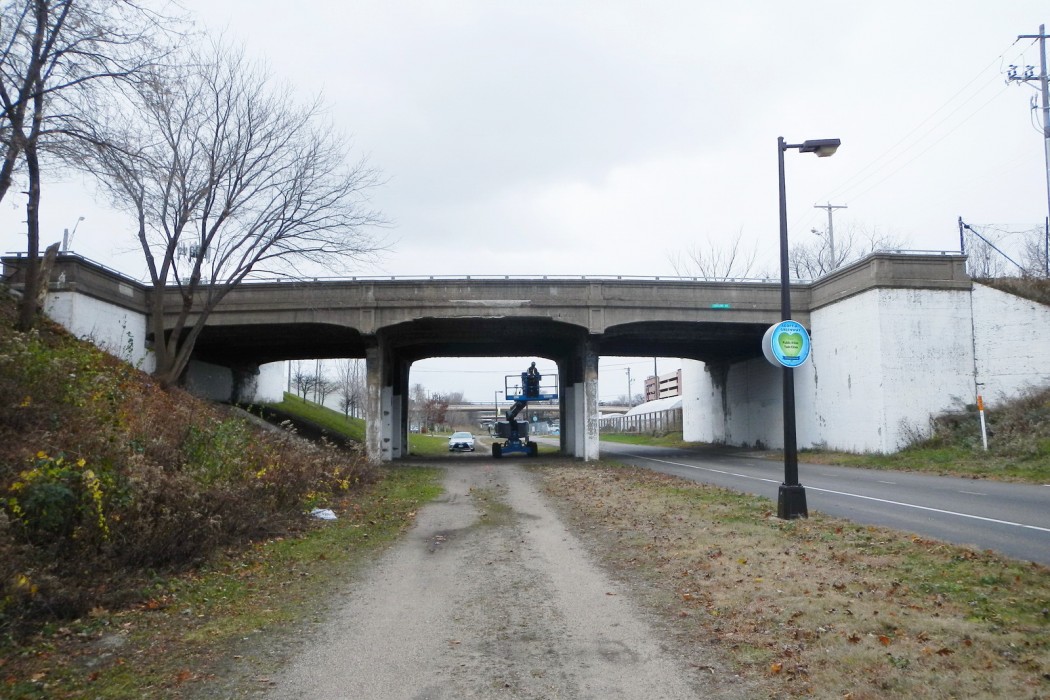WJE PROJECTS
Cedar Avenue and Portland Avenue Bridges


CLIENT |
Hennepin County |
LOCATION |
Minneapolis, MN |
Bridge Condition Assessment
WJE was retained by Hennepin County to assess and analyze structural condition data and to participate in detailed field investigation of existing conditions of the two bridges. Collins Engineers, Inc. was retained by the County to perform an in-depth bridge inspection. Braun Intertec Corporation was retained to perform on-site nondestructive testing, sample removal, and laboratory testing. WJE worked with the County, Collins, and Braun to coordinate the inspection, help define the testing procedures and locations, and interpret the results.
BACKGROUND
The Cedar Avenue South and Portland Avenue South Bridges are historic concrete, three-span continuous, multi-beam structures that are structurally deficient. Past bridge inspection reports and structural assessments performed by others reported the bridges to be in poor condition and continuing to deteriorate. The County needed to determine if structural rehabilitation or replacement represented the best way forward. The historic character of the structures and surrounding district would also need to be considered. The structures cross the 29th Street Greenway and are part of twenty-seven bridges that contribute to the CM&StP Railroad Grade Separation Historic District. The total length of each is about 100 feet (Cedar Bridge) and 93 feet (Portland Bridge).
SOLUTION
WJE coordinated the in-depth structure assessment, material sample removal, and materials testing; provided on-site assistance during the field work; reviewed concrete core samples; conducted petrographic studies; performed limited structural analysis and load rating; and developed recommendations in accordance with guidelines set forth by the Secretary of the Interior's Standards.
For the detailed inspection, all exposed concrete surfaces were evaluated to locate areas of unsound surface concrete. Nondestructive testing was performed to locate the position and depth of concrete cover for embedded reinforcing steel. Electrical potential testing was completed to determine the corrosion potential of the embedded reinforcing steel at selected locations. Destructive testing was performed to remove concrete cores, and petrographic and chloride content analyses were performed on them. Selected areas of the asphalt topping on the deck were removed to allow direct visual assessment of the top-of-deck surface. Lastly, reinforcing steel segments removed from the structure were tested to determine physical properties.
WJE engineers presented two rehabilitation options as well as a structure replacement option for each bridge. Cost estimates were developed for each option.
RELATED INFORMATION
-
 Our knowledge of bridge performance is supported by technical expertise in structural... MORE >Services | Bridge Engineering
Our knowledge of bridge performance is supported by technical expertise in structural... MORE >Services | Bridge Engineering -
 Our materials scientists provide comprehensive consulting services for the evaluation and... MORE >Services | Materials Evaluation and Testing
Our materials scientists provide comprehensive consulting services for the evaluation and... MORE >Services | Materials Evaluation and Testing -
 We have pioneered the use of nondestructive evaluation methods—such as ground penetrating... MORE >Services | Nondestructive Evaluation
We have pioneered the use of nondestructive evaluation methods—such as ground penetrating... MORE >Services | Nondestructive Evaluation







































